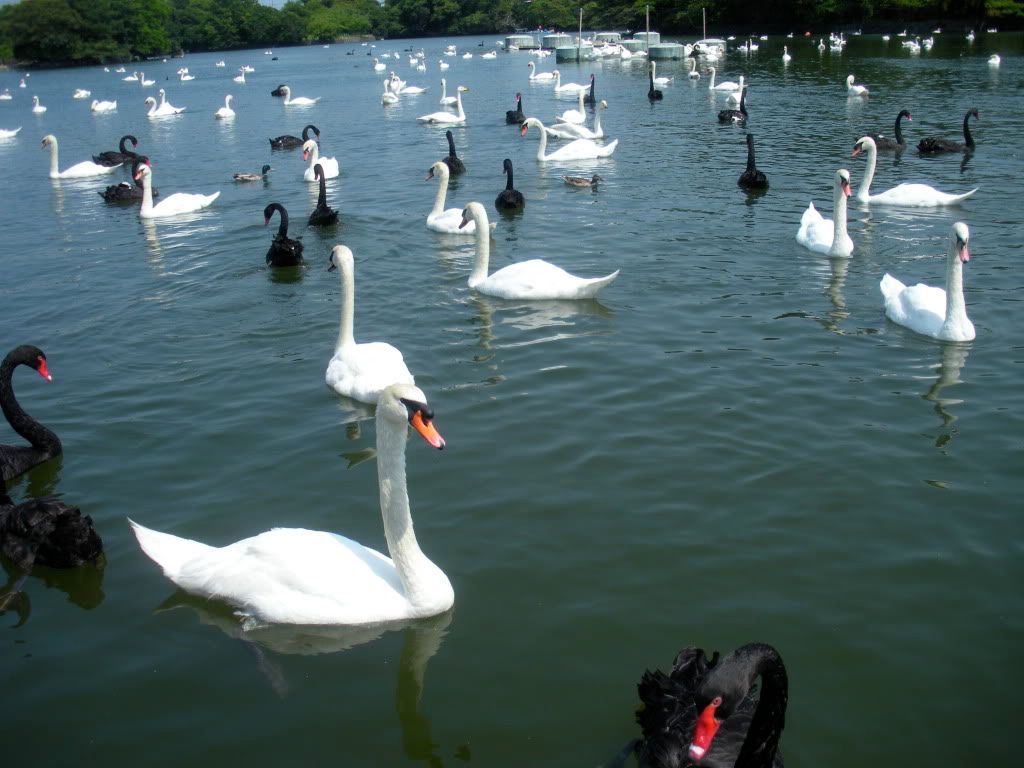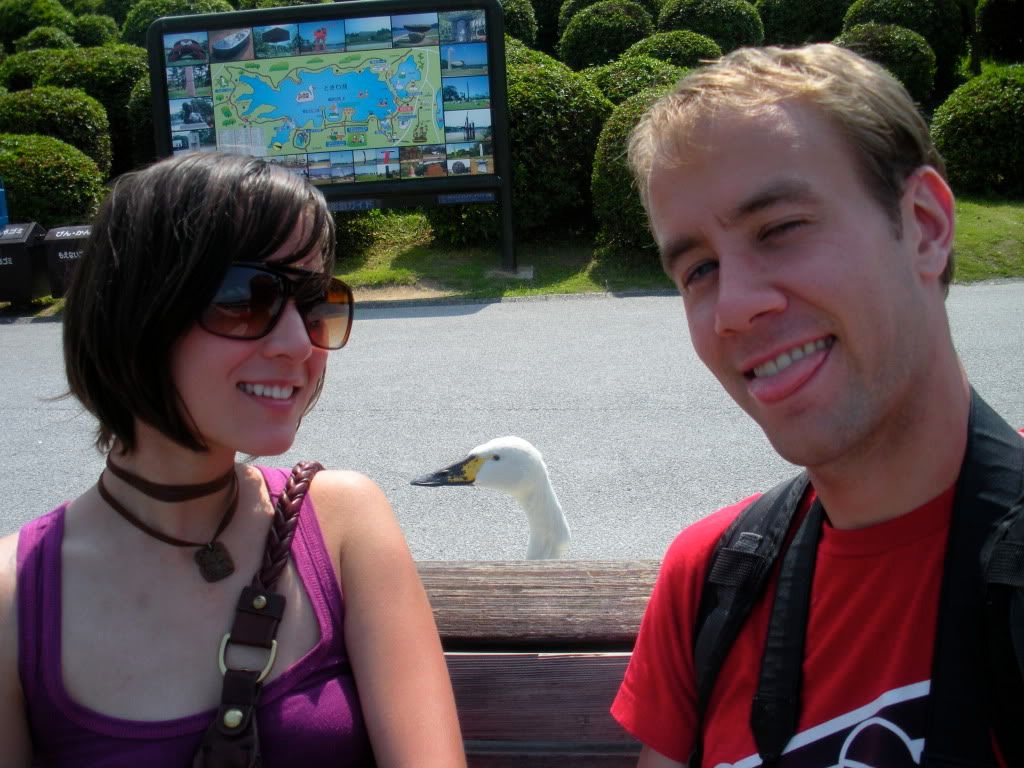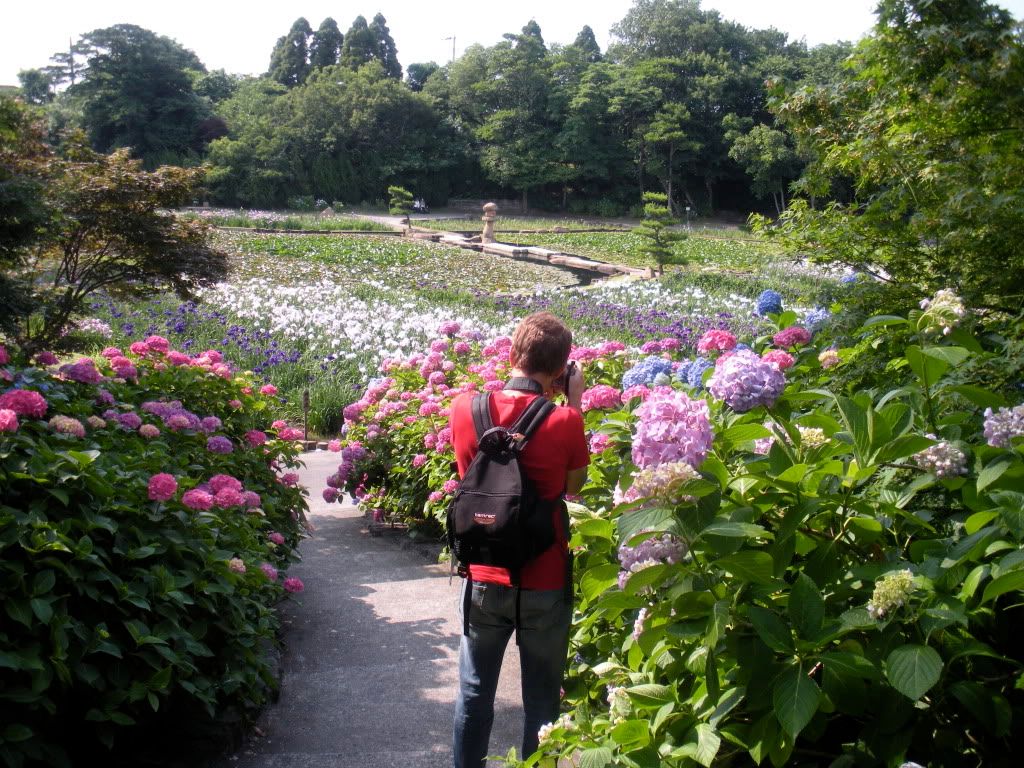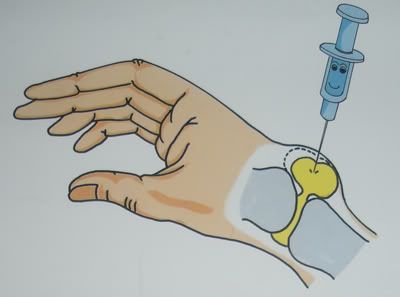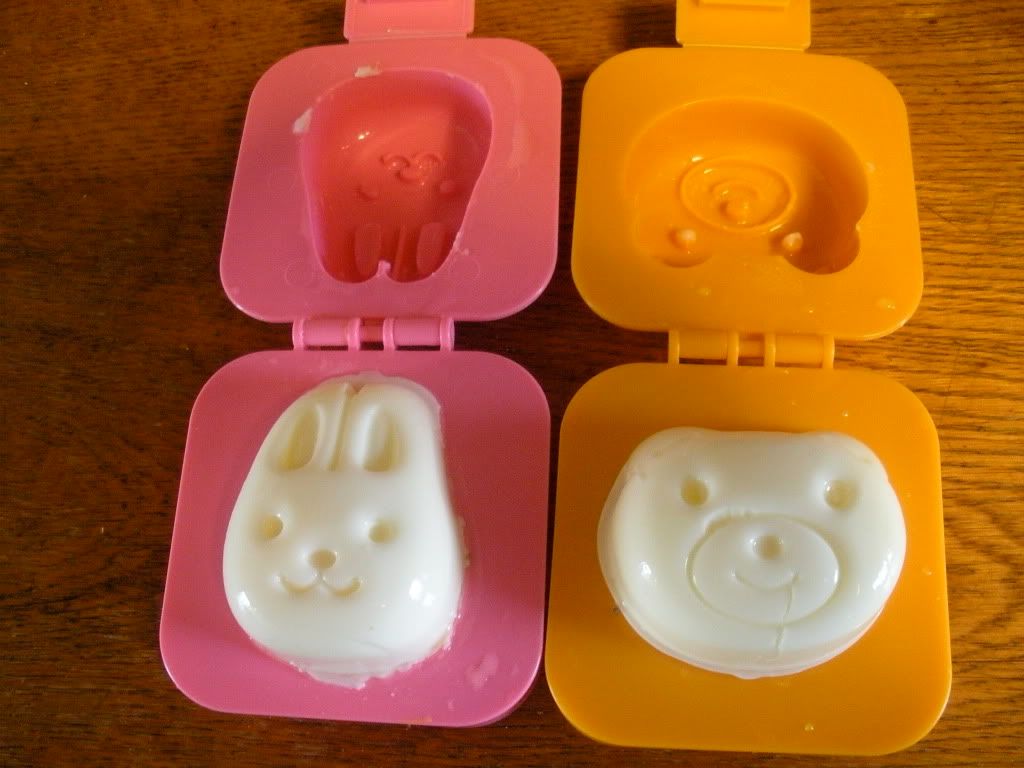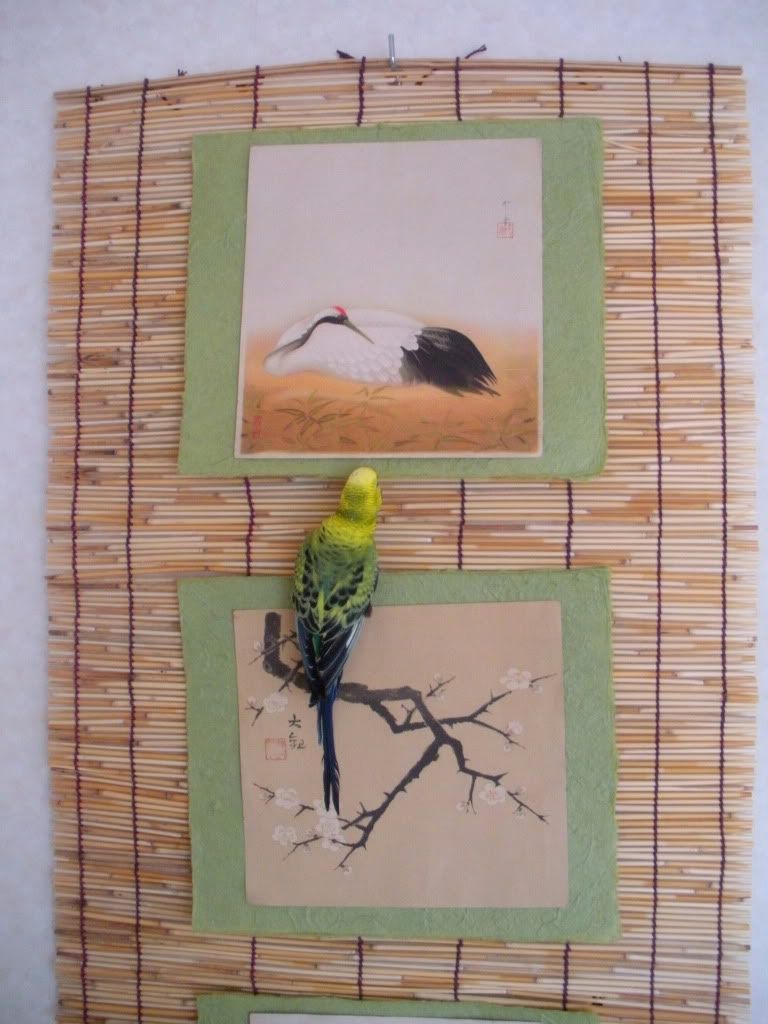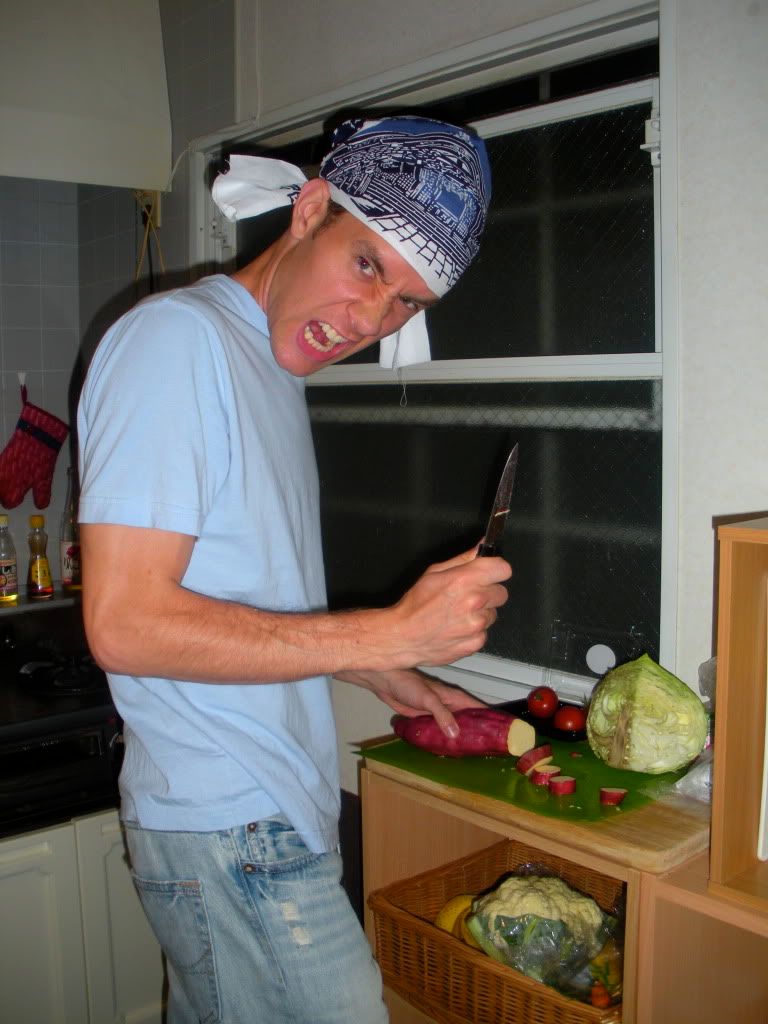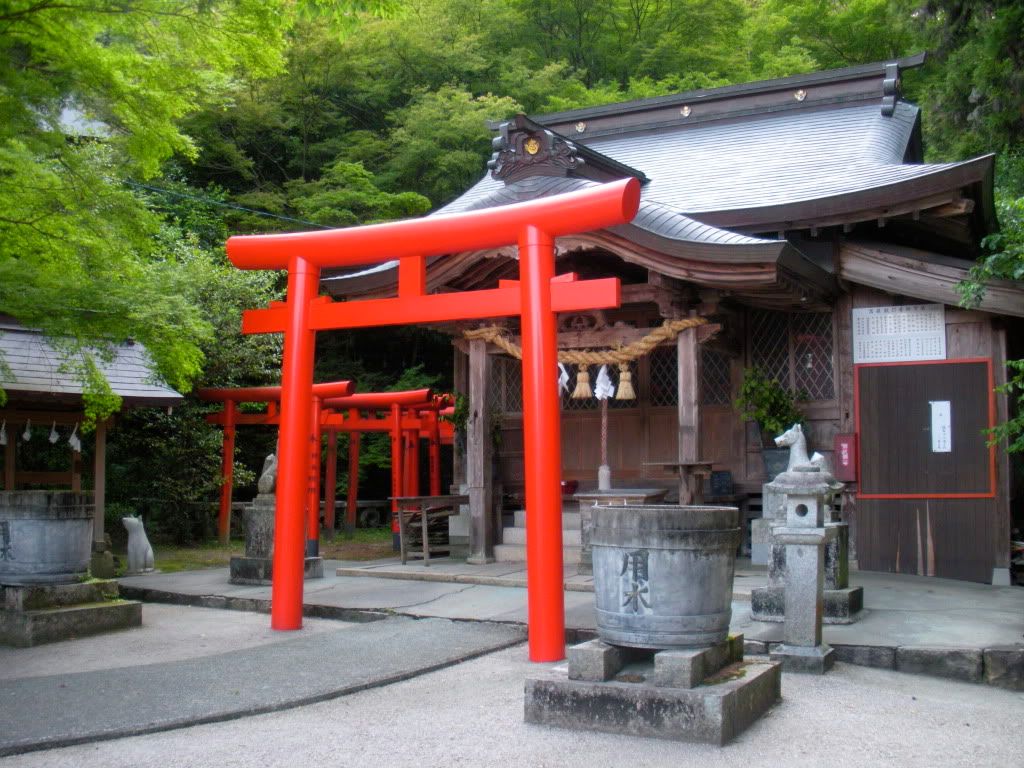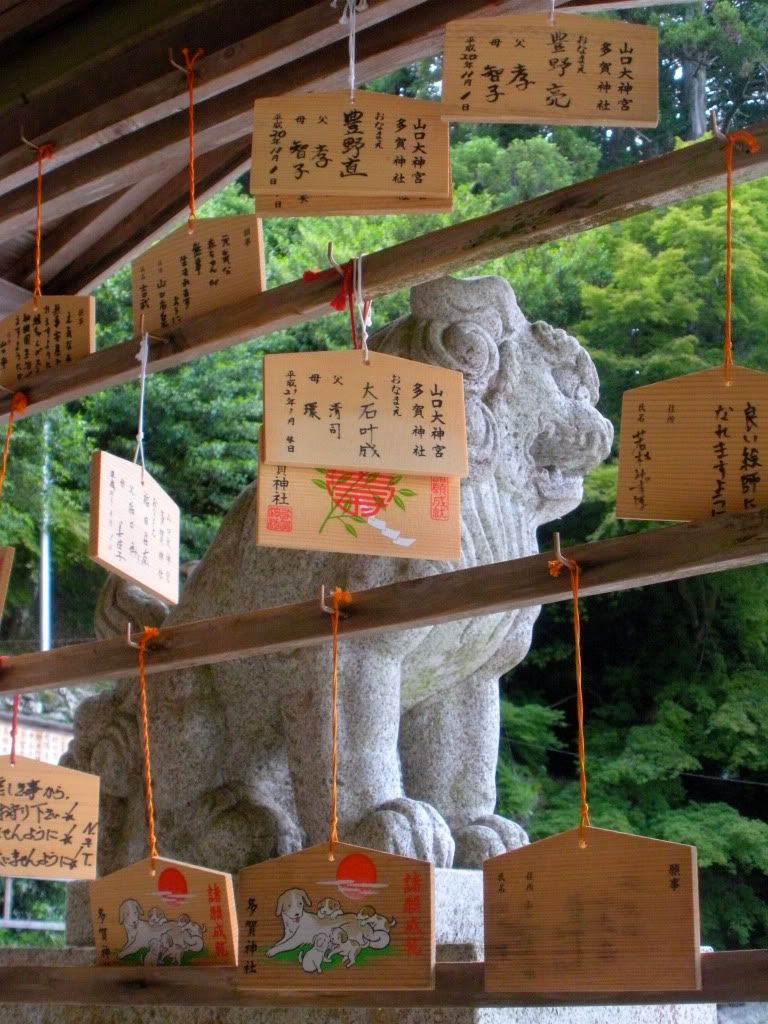Recently, Yamaguchi has been alternating between hot & humid and very rainy. Our plants have been happy, and I took the opportunity recently to snap a few photographs of our neighborhood.
 I found this little guy blending into the weeds right outside our backdoor.
I found this little guy blending into the weeds right outside our backdoor.Mia's favorite things about rainy season:
- Watching the egrets hunt in the rice paddies
- Hearing the "sploosh" of frogs jumping into the paddies as your car drives by at night
- Poking little tadpoles and watching them squirm away
- Driving by a rice paddy and having the perfect one-second view at that particular angle of the rows lining up perfectly


